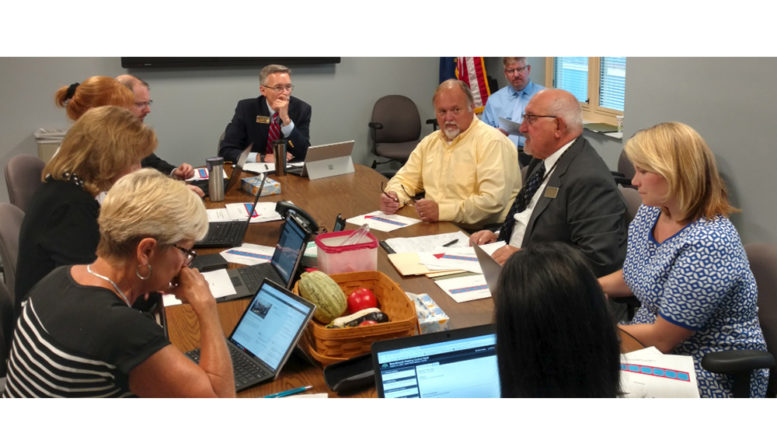 The Hamilton Southeastern school board is beginning a redistricting process for kindergarten through eighth grade. The process will end on Dec. 12 with a board vote on new K-8 school boundaries for the 2019-2020 school year.
The Hamilton Southeastern school board is beginning a redistricting process for kindergarten through eighth grade. The process will end on Dec. 12 with a board vote on new K-8 school boundaries for the 2019-2020 school year.
Board members held a work session early Tuesday morning to talk about what priorities the board wants in asking for input from the public, as the process moves along the remainder of this year.
There are a number of reasons redistricting is needed. A new school, Southeastern Elementary, will open in August 2019. Some schools are very overcrowded. For example, Thorpe Creek Elementary School has 900 students, many more students than an elementary building should contain. There continue to be schools utilizing portable classrooms.
Dr. William Carnes, who served as interim HSE superintendent for several months during 2014 and 2015, is now filling in as an interim assistant superintendent until Mike Beresford’s former position is filled. Carnes is leading the administration’s work on the redistricting plan.
At the Aug. 8 school board meeting, Carnes presented the following priorities for consideration in the redistricting process:
To the extent possible:
- The redistricting plan will attempt to assign students to attend schools closest to their homes.
- The redistricting plan will attempt to design a “feeder” system.
- The redistricting process will attempt to maintain neighborhoods and subdivisions.
- Stabilize the movement of the Exceptional Learner’s instructional learning spaces.
At the Tuesday work session, board members brainstormed a number of other considerations, including:
- Have a transparent process
- Maximize school capacity on the west side of the district to allow for continued growth in the eastern areas
- Reduce the use of portable classrooms, now and in the future
- Establish a feeder system, for example, where students from a junior high school will all go the same high school
- Use a neighborhood concept to keep neighborhoods going to the closest school geographically
- Maintain subdivisions and neighborhoods in the same school where possible
The board members and administrators will grapple with the fact that many of these concepts cannot both be used. For example, using a feeder system may not be consistent with keeping neighborhoods and subdivisions headed to the same school.
Dr. Carnes will use the ideas from board members at the work session and fashion a recommendation of priorities for the board to consider at the next regular board meeting on Wednesday, Aug. 22.
The board priorities will serve as a guideline for members of the community, as they are asked to make suggestions on how the school boundaries should be drawn. “Cluster groups,” appointed by school principals, will meet on Sept. 10 and 11. There will be focus groups sessions in late September and community dialogue sessions are set for Oct. 24 and 25. Administrators and board members will then begin to take that information and form the new school boundary lines for a final board decision on Dec. 12.

